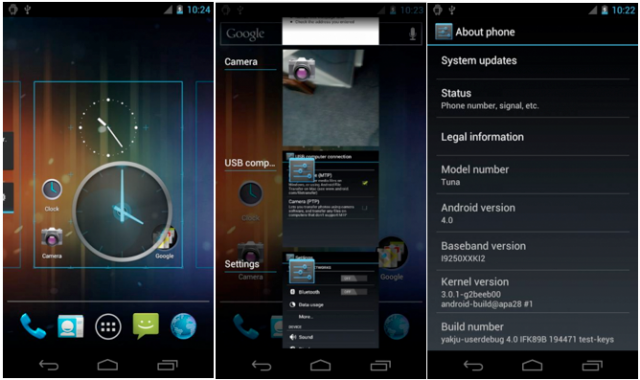
As expected, during the D8Asia conference in Hong Kong, Google has announced Android 4.0, Ice Cream Sandwich. Combining the tablet features of Android 3.0 Honeycomb and the robust phone features of Gingerbread into a unified, open-source operating system, ICS has some major changes.
The update brings an aesthetic overhaul to Google’s mobile OS, along with improved notifications and multitasking, both of which are inspired by the less intrusive, visual cues implemented in Honeycomb. Along with full hardware acceleration throughout the OS, there are neon blue accents littered throughout, with a sleek new app drawer, improved widget implementation and a translucent notification bar.
One of the most important features that iOS had over Android was its myriad typefaces: fonts tended to be smoother and cleaner, and more readable. Google has announced Roboto, a custom-made typeface tailored specifically to high-resolution displays like the Galaxy Nexus’ Super AMOLED HD. ICS incorporates virtual context buttons that rotate with the phone, and disappear when watching video.
A popular use method in Android was the touch-and-hold but this is being replaced, for the most part, with the swipe. Widgets have been made resizable throughout the OS, and folders, like in iOS, can be created by dragging one icon on top of the other. The app drawer icon is surrounded by a flexible Favorites tray, which can hold individual icons or folders.
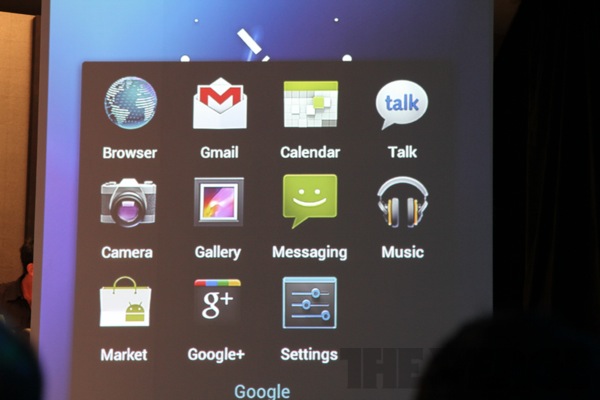
Another request from users, screen captures, are being implemented into the OS natively. Hold power and the volume-down button and there you go!
The keyboard has been overhauled as well as the notification system, which can be set for individual applications, and each notification can be swiped away direction from the notification bar. The keyboard has better-implemented copy-and-paste, made more consistent throughout the OS (finally!). There is improved talk-to-text, though it’s unknown whether you need an active 3G connection to use it like with Siri in iOS.
Face-recognition has been implemented to allow for unlocking your handset with no user interaction.
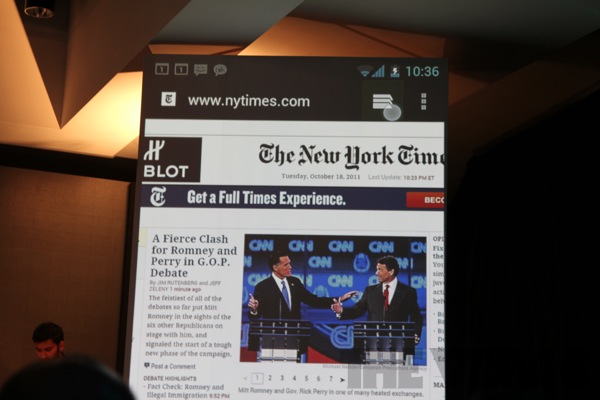
The browser has received an overhaul, allowing for up to 16 tabs, and to swipe between them like the new multitasking menu. Bookmarks can be synced between your Chrome account and your mobile device, and there is a switch to go between desktop and mobile versions of the same page. You can also save entire pages to your phone for offline reading.
To the Gmail app, it too has been totally changed. You can swipe between messages and a person’s email address is now a “chip” with pictures and names. In fact, every native Google app, such as the Calendar, Messaging, Maps, Google+ have seen UI improvements and tweaks.
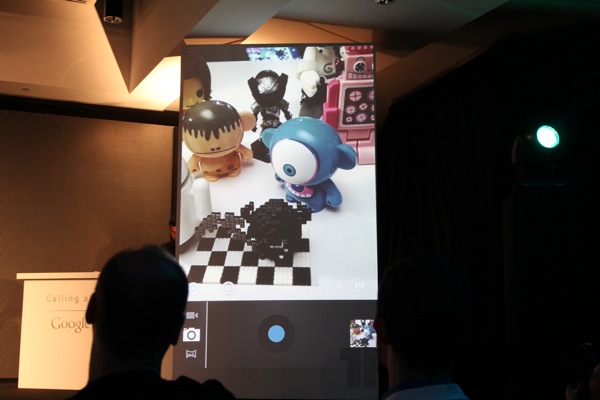
The Camera app has been redone to include instant shutter and touch-to-focus. There is intelligent face detection, and with third-party apps you can touch the photo to share it instantly. Along with a new Gallery, there is a built-in photo editing suite and filters to change the look of your pics before you post them.
Google has created a native photo stitching feature for true panorama shots. Video has continuous autofocus and zoom-while-recording, finally catching it up to iOS in the camera UI field.
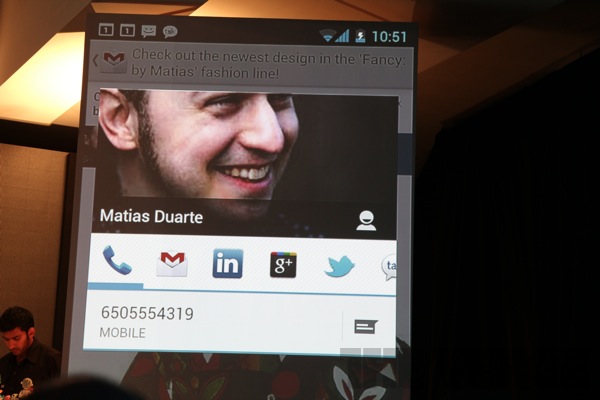
There is a new People app, which doubles as a Contacts portal and a social hub. Your most-contacted “buddies” are off to the side, surrounding by Me — actually you — at the centre. Each contact has a big profile photo next to his or her name, much like a magazine masthead. The effect looks really cool, and professional.
Like in previous Samsung devices, Google has implemented a quick-dismiss list of messages you can send to someone you don’t want to talk to. I never really used this feature on the Galaxy S II but it’s nice to have.
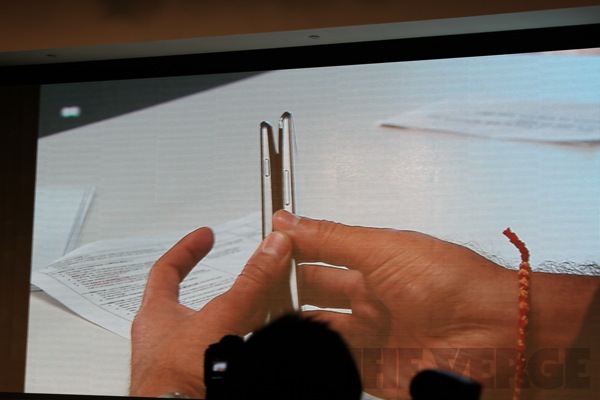
Something very cool Google has done is to include a feature called Android Beam which allows two NFC-enabled devices to bump one another and share content such as web pages, contacts, map locations, etc. If you’re inside an app that doesn’t support Beam, it will send the other person the link to that app in the Android Marketplace.
The Android 4.0 SDK is available today for developers to start working on.
Thanks to The Verge for lending us your images, and your awesome livestream!
MobileSyrup may earn a commission from purchases made via our links, which helps fund the journalism we provide free on our website. These links do not influence our editorial content. Support us here.


